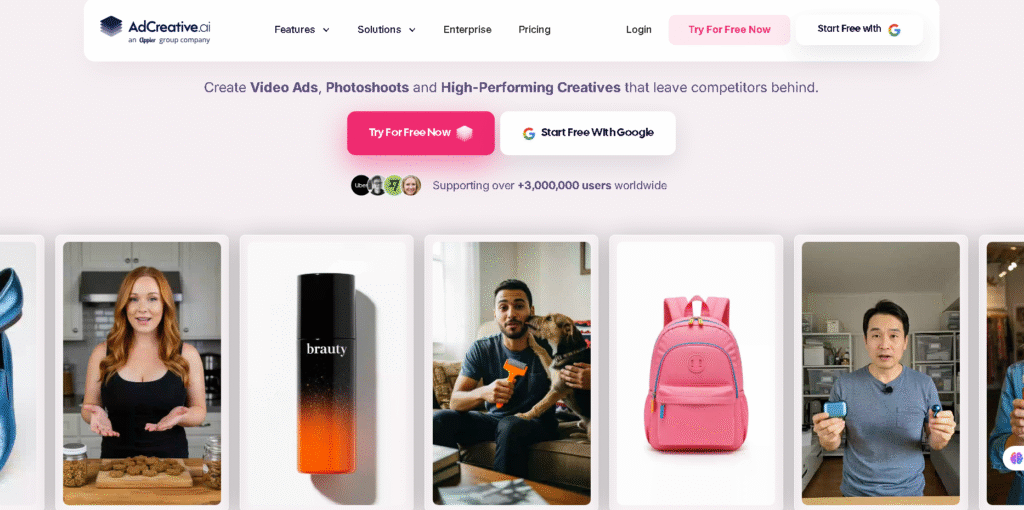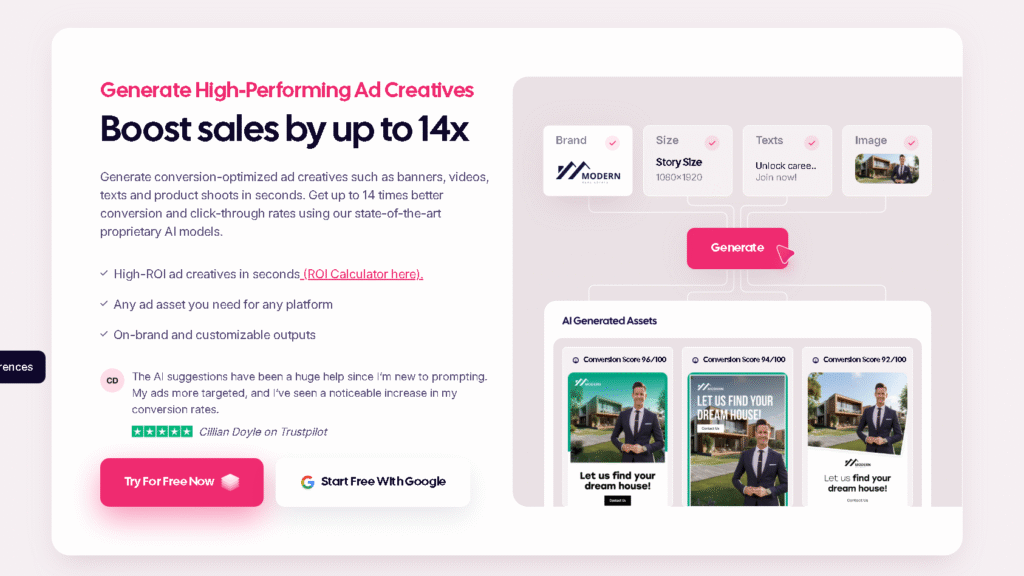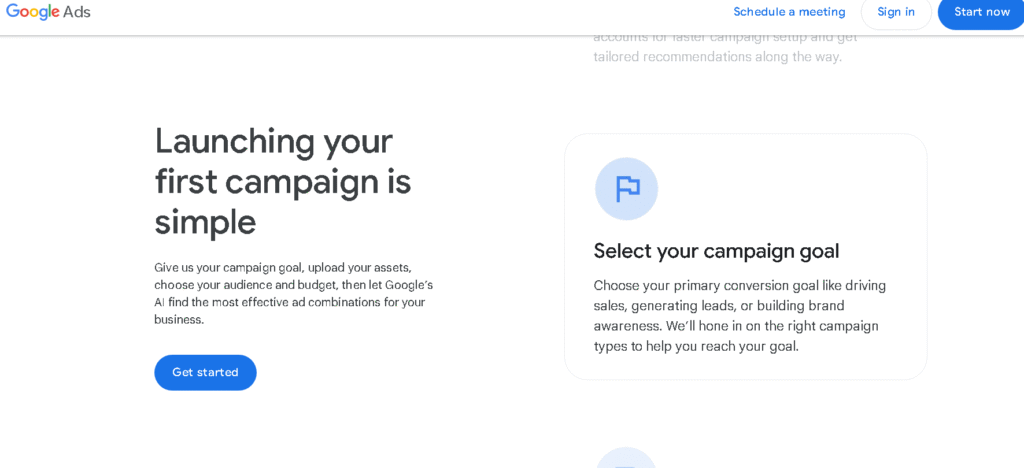Learn step-by-step how to create high-converting ecommerce ads using AI marketing tools, ad optimization, and automation to boost sales.
Running an ecommerce business in today’s competitive digital landscape is both exciting and challenging. On one hand, there has never been a greater opportunity to reach global audiences through ecommerce advertising on platforms like Facebook, Instagram, TikTok, and Google. On the other hand, competition is fierce, advertising costs are rising, and consumers are becoming increasingly selective about the ads they engage with.
The traditional approach to advertising where marketers manually write ad copy, design visuals, and test targeting settings no longer delivers the best results. Many businesses spend thousands of dollars trying to figure out what works, only to end up with disappointing click-through rates and low conversions.
Here's where advertising driven by AI is changing the game. E-commerce brands can now use machine learning and artificial intelligence to produce AI e-commerce advertisements that are more intelligent, quicker, and more successful than conventional ads thanks to the development of AI marketing tools.
Table of Contents
Why Ecommerce Ads Need a Smarter Approach
This blog post will go into great detail on how to use AI models to create high-converting e-commerce advertisements, outline the main advantages, provide a step-by-step tutorial, highlight the top AI ad tools on the market right now, and look into the future of e-commerce AI marketing. By the end, you will have a well-defined plan for optimizing your campaigns and boosting your return on advertising investment.
What Exactly Are AI Ecommerce Ads?
Let's first define AI ecommerce ads so that we can better understand how to develop campaigns.

AI e-commerce ads are those that make use of machine learning and artificial intelligence technologies to enhance various facets of the advertising process, from production to distribution. AI delivers more relevant, interesting, and conversion-focused advertisements by analyzing vast amounts of data to find patterns in consumer behavior rather than depending solely on conjecture.
For instance:
- In just a few seconds, AI ad generation tools can produce dozens of ad creatives, such as banner images, text variations, and even brief promotional videos.
- AI ad targeting tools can divide up your audience into groups according to demographics, browsing habits, intent to buy, and even anticipated future behavior.
- In order to optimize sales, conversion optimization tools automatically modify components such as call-to-action buttons, images, and ad copy based on real-time campaign feedback.
As a result, companies can quickly scale campaigns, reach the right audience, and increase conversions while wasting less money than they would if they spent weeks manually testing ad variations.
Simply put, AI e-commerce ad tools enable you to produce more effective ads more quickly, more affordably, and with significantly less guesswork.
Why AI Matters in Ecommerce Ads
Let's examine why AI-powered advertising is becoming so important in e-commerce now that we know what it is.
1. Lightning-fast scalability
Developing enough ad copy and visual variations to identify the most effective combination is one of the most time-consuming aspects of e-commerce advertising. This is resolved by AI, which produces hundreds of ad creatives in real time. Brands can expand campaigns across several platforms with automated ad generation without overburdening their marketing staff.
2. More Intelligent Customization

In digital marketing, personalization is crucial. Customers anticipate advertisements that seem pertinent to their requirements. AI systems are very good at evaluating consumer behavior and presenting personalized AI e-commerce advertisements. For example, depending on their shopping habits, one person may see an advertisement for running shoes with free shipping, while another may see a temporary discount on the same item.
3. Ongoing Advertising
Optimization AI continuously optimizes ads in the background, in contrast to traditional advertising, which necessitates manual A/B testing. After determining which headlines, images, and calls to action are most effective, it automatically adjusts the budget to concentrate on the best-performing combinations. This guarantees that every dollar spent has the best possible chance of yielding a profit.
4. Decreased Expenses and Wasted Money

AI saves businesses money by identifying high-intent audiences and testing ad variations automatically. Because of this, e-commerce ad conversion optimization is far less expensive than conventional techniques.
5. Increased ROI and Conversions
Results are ultimately the main driver behind e-commerce AI marketing adoption. Compared to manual advertising, businesses can use AI to increase engagement rates, improve conversion rates, and boost ROI. For instance, an online fashion retailer optimized its Instagram ads using AI. The AI system found within a month that advertisements with actual customer photos performed 40% better than those with well-executed studio shots. The store doubled sales without increasing ad spend by refocusing the budget on those ads.
Step-by-Step Guide: How to Generate High-Converting Ecommerce Ads with AI
Let's go over a practical framework for developing campaigns that convert using AI e-commerce ad tools.
Establish Specific Campaign Objectives

You must decide what your goals are before utilizing any AI marketing tools. Do you wish to retarget previous clients, create leads, raise brand awareness, or increase product sales? AI systems will optimize your campaigns more successfully if you have clear goals.
Recognize Your Target Market
AI functions best with high-quality data. Give your AI tools information about your ideal clients, such as their demographics, past purchases, browsing habits, and engagement metrics. This makes it possible for AI ad targeting systems to show ads to the most appropriate individuals.
Pick the Appropriate AI Resources
Each of the numerous top AI tools for e-commerce advertising has a distinct function. While some specialize in audience targeting or conversion tracking, others concentrate on creative generation. Consider your immediate needs when selecting tools.
For instance:
- Use Pencil and AdCreative.ai for creative testing.
- Google Performance Max and Albert AI are used for optimization.
- For writing ad copy: Phrasee and Jasper
Employ AI to Generate Ads for Creatives
Ad copy and visuals are slow to create by hand. Rather, use AI ad generation to produce multiple iterations of product photos, video advertisements, and PRomotional text. The more variations you test, the faster you’ll find what works best.
Launch and Optimize Campaigns
Once your ads are live, let AI powered advertising tools run continuous testing. They will automatically optimize ad delivery by adjusting bids, shifting budgets, and refining targeting. This is where ecommerce ad conversion optimization really happens.
Monitor and Adjust
Even though AI handles most of the heavy lifting, human oversight is still important. Review performance dashboards weekly, check whether conversions align with your goals, and make strategic adjustments if needed.
Best AI Ecommerce Ads Tools and Platforms
Here’s a list of top-performing AI ecommerce ad tools you should explore:
| Tool | Best For | Features |
|---|---|---|
| AdCreative.ai | Automated creative generation | Creates hundreds of ad banners and visuals in seconds |
| Albert AI | Full campaign optimization | Self-learning AI for budget allocation, targeting, and scaling |
| Phrasee | AI-powered ad copy | Generates engaging, conversion-focused ad copy |
| Pencil | Video ads | Produces AI-generated short-form video ads |
| Google Performance Max | Multi-channel optimization | Runs ads across YouTube, Display, Search, and Shopping |
| Meta Advantage+ | Facebook/Instagram automation | Simplifies campaign creation with AI-driven targeting |
These tools not only help create ads but also ensure continuous ad optimization for maximum ROI.
Challenges of AI in Ecommerce Advertising (and How to Solve Them)
While AI offers major benefits, businesses may face some challenges:
- Over-Reliance on Automation
- Risk: Blindly trusting AI can result in ads that don’t match your brand voice.
- Solution: Always review AI-generated creatives and copy before publishing.
- Competition Saturation
- Risk: As more brands adopt AI, it becomes harder to stand out.
- Solution: Focus on unique storytelling and creativity alongside AI automation.
- Data Privacy Concerns
- Risk: Consumers may find hyper-personalized ads intrusive.
- Solution: Be transparent about data usage and respect privacy regulations like GDPR.
- Learning Curve for New Tools
- Risk: Many businesses feel overwhelmed by too many AI marketing tools.
- Solution: Start with one tool, experiment, and expand gradually.
Future Trends: The Evolution of AI Ecommerce Ads

AI e-commerce advertisements have a very exciting future. The following trends are worth keeping an eye on:
Hyper-Personalization: Using user activity in real time, AI will present tailored advertisements.
Voice Search Ads: AI ad targeting will be extended to voice queries as Alexa and Siri gain traction.
Visual and AR Ads: AI will create interactive augmented reality advertisements that allow consumers to virtually "try" goods.
Predictive Conversion Optimization: AI will identify users who are most likely to convert before displaying advertisements, rather than optimizing after the fact.
Early adoption of these trends will give businesses a significant competitive edge in the crowded e-commerce market.
If you want to boost performance, check out our guide on 5 Best AI Tools for Sales Teams in 2025.
FAQs
1. How can AI improve ecommerce ads?
AI improves ecommerce ads by using machine learning for ad optimization, personalized targeting, and automated creative generation. This leads to higher click-through rates and better conversions.
2. What are the best AI marketing tools for ecommerce advertising?
The best AI marketing tools for ecommerce ads include AdCreative.ai for creatives, Albert AI for automation, and Google Performance Max for multi-channel ad optimization.
3. How do I optimize ecommerce ads with AI?
You can optimize ecommerce ads with AI by setting clear campaign goals, using automated ad generation tools, and relying on conversion optimization tools to refine performance in real time.
4. Can AI ecommerce ads help reduce advertising costs?
Yes, AI ecommerce ads reduce costs by cutting wasted ad spend, improving audience targeting, and automatically reallocating budgets to the best-performing ads.
5. Why are AI models important for high-converting ecommerce ads?
AI models analyze customer behavior, generate personalized ad creatives, and perform continuous ad optimization. This makes them essential for creating high-converting ecommerce ads that deliver better ROI.
Conclusion: Take Action Today
Using intelligent systems that are better than humans at predicting, creating, and optimizing advertisements is the way of the future for e-commerce advertising. Brands can use AI marketing tools to create ad creatives in a matter of seconds, optimize ads in real time, and use conversion optimization tools to maximize return on investment.
It's time to use artificial intelligence to optimize e-commerce advertisements if you're serious about growing your company. There has never been a better chance to use AI to boost your advertising performance, regardless of how big or small your Shopify store is.
Use AI e-commerce ad tools now to create your first high-converting campaign before your rivals surpass you.
At tooljunction, we share honest AI tool reviews and tutorials to help you choose the right tools for your creative projects.



